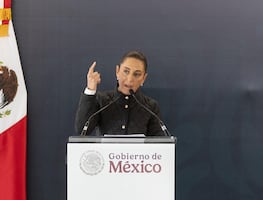Más Información

“Vamos a dar apoyo a los pequeños agricultores por sequía en Sonora”; Claudia Sheinbaum instruye a Berdegué

Derrota de México en disputa por maíz transgénico contra EU; estos son los argumentos de Sheinbaum y AMLO para prohibirlo

Óscar Rentería Schazarino, ha operado contra CJNG, Viagras y Templarios; es el nuevo secretario de Seguridad en Sinaloa

Claudia Sheinbaum pide respeto para Maru Campos; gobernadora anuncia acuerdo para transporte público

Claudia Sheinbaum anuncia los Centros de Cuidado Infantil en Chihuahua; inaugura hospital en Ciudad Juárez
The coronavirus pandemic has embarrassed the entire society. From the perspective of an economic crisis to a return to the "new normal" that has just arrived and does not end up being new or normal, everyone's life has changed to different degrees. However, there is one aspect that should be occupying an essential place in the debate for the future—the one about education.
Education
is a human right enshrined in Article Three of our Constitution. However, it is a right whose guarantee depends on the actions of the State. The cuts in the different programs for education have put the public education model at risk, and the current pandemic has only highlighted the socio-economic differences that coexist among Mexicans.
Since March, millions of children and teenagers have been forced to move towards a model of digital education for which Mexico was not prepared. The educational infrastructure, from schools to desks, is deficient in the case of many communities far from urban centers. The units have televisions or screens to carry out distance education. There were attempts, in past years, to initiate " digitization " programs with the delivery of tablets to students, despite this, today there are very few students who have the necessary resources to transition to a digital education (a tablet or smartphone and internet service at least).
The impact on children and young people is immediate and also affects their future. Education is a determining factor for social mobility. According to OECD data, GDP per capita grows between 4 and 7% for each additional year of schooling . There is, therefore, a very close relationship between levels of inequality, low school and social mobility. The countries that, as a public policy, invest more resources in quality education, especially in basic education (preschool, primary and secondary) are those that achieve reductions in the socio-economic gap, mainly benefiting families with more limited resources.
According to a UNAM study, more than 70% of the deaths associated with COVID-19 in Mexico are associated with people who have a low level of primary education or lower as Raúl Contreras, Director of the Faculty of Law, addressed some days ago. A higher educational level also contributes to better decision making in different types, from health to family. Various studies have shown a global scale, a more significant investment in education for girls from basic levels, adolescent pregnancy, and, therefore provides greater opportunities for mobility for the girl, her family, and the country in the future.
Investing in education is a win-win for the entire society. Although it is not the only factor, it is one that can change the possibilities of a family for social mobility. In the times to come, this can be, without a doubt, a crucial element to prevent most of the country's population from falling into poverty; it is an item in which it should not, should not be spared. For the good of Mexico .
sg





